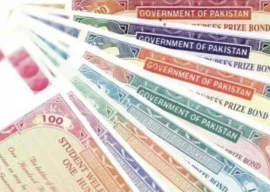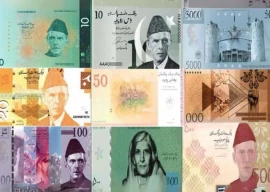
The good news is that circular debt in the energy sector is going down. The bad news is that it is doing so for all the wrong reasons.
Circular debt has now become shorthand for the crippling string of financial liabilities that energy companies owe each other because the federal government fails to live up to its promise to pay out energy subsidies that it announces as vote pleasers. This debt has resulted in a massive cash shortage virtually all along the energy chain and significantly reduced the ability of power companies to operate at full capacity, which in turn causes massive power outages throughout the country, particularly during the summer months of peak demand.
But now at last, it appears that the government is paying out what it owes in subsidy payments. Azfar Naseem and Sateesh Balani, research analysts at Elixir Securities, an investment bank, estimate that total circular debt throughout the energy chain has not only stopped growing, but has shrunk by about Rs137 billion during the first six months of the fiscal year ending June 30, 2013.
Part of this reduction has come from higher subsidy payouts to the energy sector from the finance ministry, which rose to Rs160 billion between July 1 and December 20 of this year, about 5% higher than the net payouts throughout the whole previous fiscal year that ended June 30, 2012.
Another significant chunk came when the government effectively forced the state-owned Oil & Gas Development Company (the largest company in Pakistan by market capitalisation) to buy about Rs82 billion in government bonds meant to clear out the outstanding liabilities. The bonds do not mean that the government has paid out its liability: they just mean that they forced OGDC to pay the rest of the energy chain and promised to pay OGDC back.

The government was given this fiscal breathing room by the inflow from the United States in the form of $1.1 billion in outstanding dues on account of the Coalition Support Fund. That entire amount, by some accounts coming out of the finance ministry, was spent on power subsidies. Yet the government may well be running out of accounting tricks to patch up the power sector before the elections.
The reason the government has tried to juggle around its scarce cash reserves is because it wants to make sure that the power companies have enough cash to buy the fuel they need to keep the lights on in the country, at least most of the time, in the run-up to the elections, expected around May 2013.
These techniques appear to be having at least some positive impact: the outstanding receivables at Pakistan State Oil, the largest oil retailer in the country, are down by almost 40% to around Rs120 billion. Receivables at Hub Power Company and Kot Addu Power Company (which supplies politically important regions of southern Punjab) are also down substantially.

On the surface, the problem of circular debt appears to be dissipating, but nobody in the energy industry in Pakistan is celebrating. The reason, of course, is that the reduction in circular debt relies on unsustainably cosmetic measures that do nothing to actually fix the problem. Balani and Naseem at Elixir Securities reckon that the government may start running out of cash as soon as the first quarter of calendar year 2013, especially once the interim government is sworn in before the elections.
During its five years in office, the current administration will have spent close to Rs1.5 trillion in electricity subsidies rather than solve the power sector’s biggest problem: the fact that the cost of producing electricity is higher than the rate the government deems politically feasible. There are several long term solutions to that problem, none of which the government has undertaken just yet. No wonder the energy sector is not celebrating.
Published in The Express Tribune, December 28th, 2012.
COMMENTS (3)
Comments are moderated and generally will be posted if they are on-topic and not abusive.
For more information, please see our Comments FAQ


1736146934-0/Untitled-design-(57)1736146934-0-165x106.webp)









1737614355-0/Express-Tribune-(1)1737614355-0-270x192.webp)








@Ihsanullah Bangash:
Most of that money is owed by government departments and ministries. Only they can get away with running up huge bills and not settling them. The circular debt is actually a case of government default.
Good Reporting ET
"government fails to live up to its promise to pay out energy subsidies".
Please do not forget the money consumers owe to the distribution companies.
Oct 2012 receivables Rs 402.005 billion Lahore (LESCO’s) receivables Rs 34.548 b (Rs 7.610 b Feb 08)
Gujranwala (GEPCO’s) receivables Rs 9.213 b (Rs 1.920 b Feb 08)
Faisalabad (FESCO’s) receivable Rs 9.560 b (Rs 2.371 b Feb 08)
Islamabad (IESCO) Rs 18.817 b (Rs 3.344 b Feb 08)
Multan (MEPCO) Rs 18.923 b (Rs 5.033 b Feb 08)
Peshawer (PESCO) Rs 52.874 b (Rs 19.024 b Feb 08)
Hyderabad (Hesco)/Sukkur (Sepco) Rs105.501 billion (Rs21 billion in 2008)
Quetta (Qesco) Rs60.952 billion (Rs9.212 b in 08)
Karachi (KESC) Rs63.554 billion (Rs37.101 b 08)